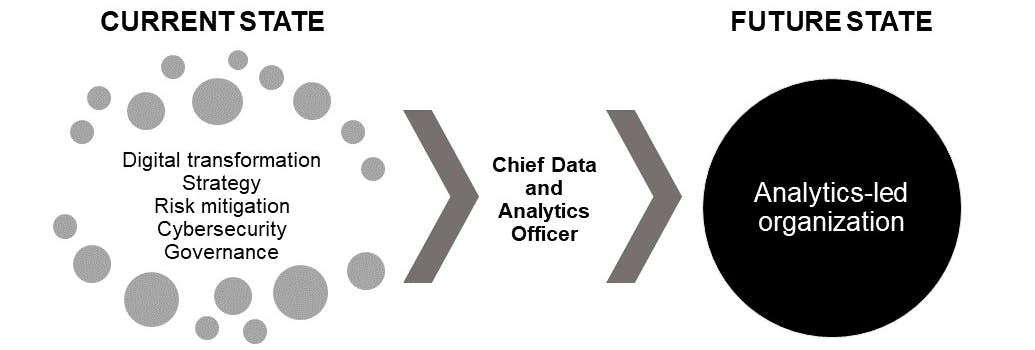
The importance of the CDAO
Data is no longer an advantage – everyone has it yet, not everyone uses their data to its greatest potential. That’s where the chief data and analytics officer (CDAO) comes in. Primary motivations for hiring a CDAO vary, but according to a recent Experian report, the top three motivations for hiring a CDAO include:
- Capitalizing on big data opportunities
- Creating a competitive advantage through data
- Having a consistent approach to minimize risk in data-driven projects
Many companies are looking to CDAOs to create competitive advantages, new products, or new services with data. Effectively, the CDAO is tasked with monetizing, governing, and managing the organization’s data.
The responsibilities of the CDAO
With CDAOs being a relatively new role to most organizations, new CDAOs can be overwhelmed with where to start, how to meet uncertain goals, and what should take top priority. Companies wanting to establish a CDAO position often benefit from hiring an outsourced CDAO to assume the position until the department is filled, and strategies are in place.
Whether working with an outsourced resource or a new hire, a CDAO can create enterprise value by serving as the catalyst for change, to bring your organization from where it is today to your desired future state.

Simply put, a CDAO can:
- Elevate and prioritize digital transformation initiatives: A CDAO can define and execute on transformation priorities that can become stalled without expert oversight.
- Implement a strategy that embraces data: Based on the needs of the business and leadership’s goals, a strong data strategy can become a competitive advantage.
- Balance risk and cybersecurity protocols: Working with a chief information security officer (CISO), the CDAO can strengthen security controls for personal or sensitive data, while increasing access to other valuable types of data.
- Lead the utilization and governance of data across the organization: A CDAO can leverage the connectivity of data to create a governance plan that will help data users make better decisions.
- Build an analytics-led organization: Organizations with a CDAO are more likely to use big data and analytics pervasively across all departments.
The future of the CDAO
While most CEOs and CIOs recognize that information and data are assets, few businesses are measuring benefits, financial value, or monetization opportunities of their information and data. Companies have used data capabilities to not only generate revenue, but also increase customer loyalty and highlight internal analysis capabilities. Analysts believe that as monetization and improved operational opportunities are uncovered from existing data, there will be a greater need to ensure clients’ data is secure and of high quality. Learn more about how leading companies are unlocking their potential with a CDAO.
If your company is interested in expediting data insights through an outsourced CDAO, contact us to learn more.
